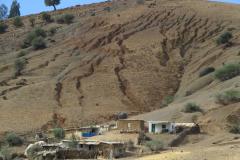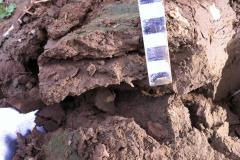How soils are under threat
Around the world man manipulates his environment for food production and other objectives. When soils are managed sustainably the quality is maintained over time or increases. Yet, if not managed adequately, soils easily degrade and are negatively affected. Over exploitation, overgrazing, inappropriate clearing techniques and unsuitable land use practices have resulted in severe nutrient decline, water and wind erosion, compaction and salinization.
At present, soil is a threatened natural resource. Some 17% of the land surface has already been strongly degraded and the affected area is still growing. This is occurring even though there is a wealth of know-how related to land management, improvement of soil fertility, and protection of soil resources. The resulting decrease in productivity has especially affected marginally suitable lands that were not given the opportunity to recuperate for a sufficient length of time after prolonged cultivation. This is sometimes the result of lack of resources, such as labour or inputs to maintain soil quality and can be related to an increasing population pressure that limits the area for cultivation.
Cultivating the soil always results in a decline of fertility. Part of the nutrients that are taken up by the plants is removed by harvesting. To keep the soil productive, its nutrient levels need to be replenished on a regular basis. Crop residues should be returned to soil to maintain or even increase their organic matter status. A sufficiently high organic matter level is important to increase soil stability, soil water holding capacity and the nutrient holding capacity and supply. However, additional organic and/or inorganic fertilization is inevitable to restore and maintain the optimal productivity of the soil.

